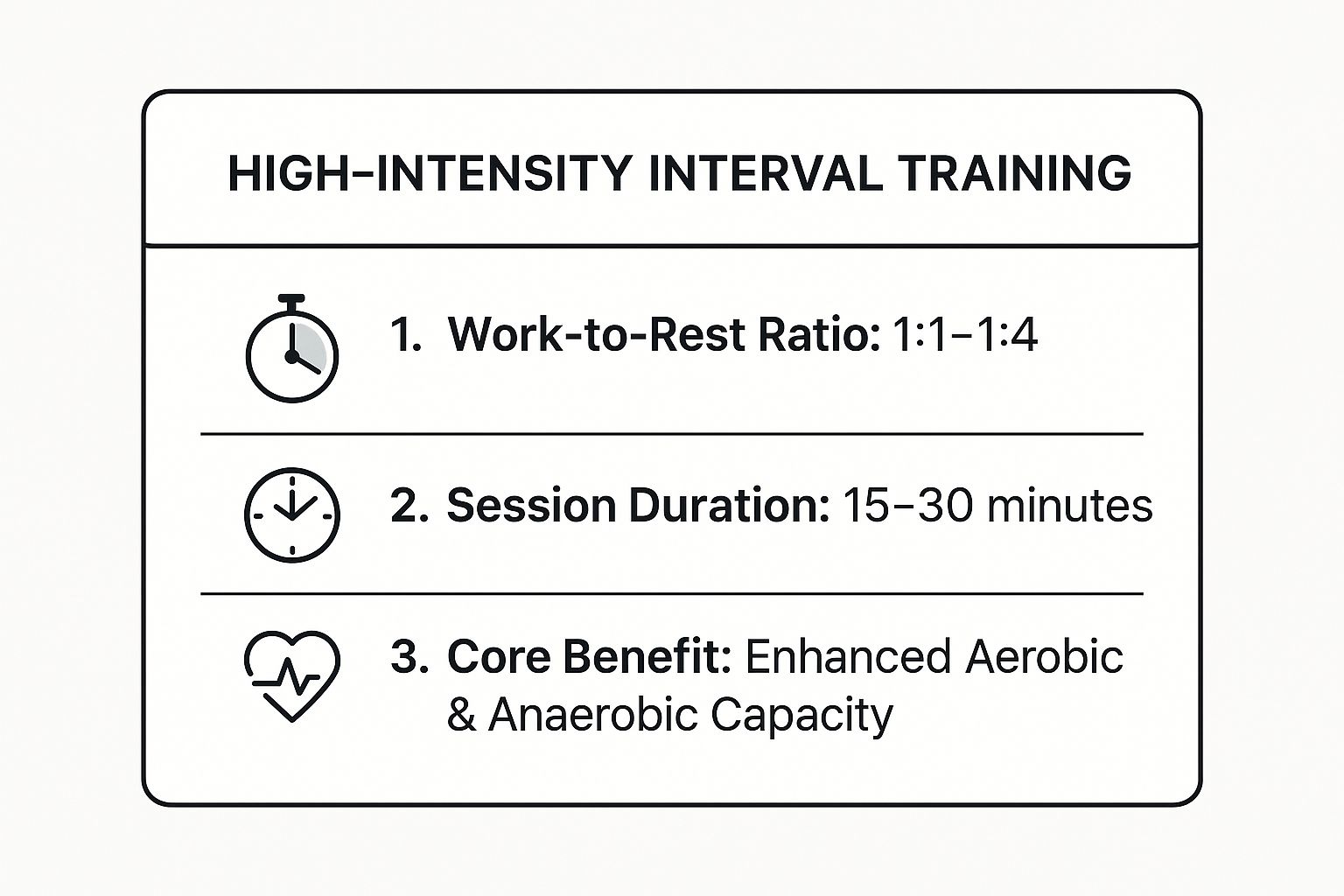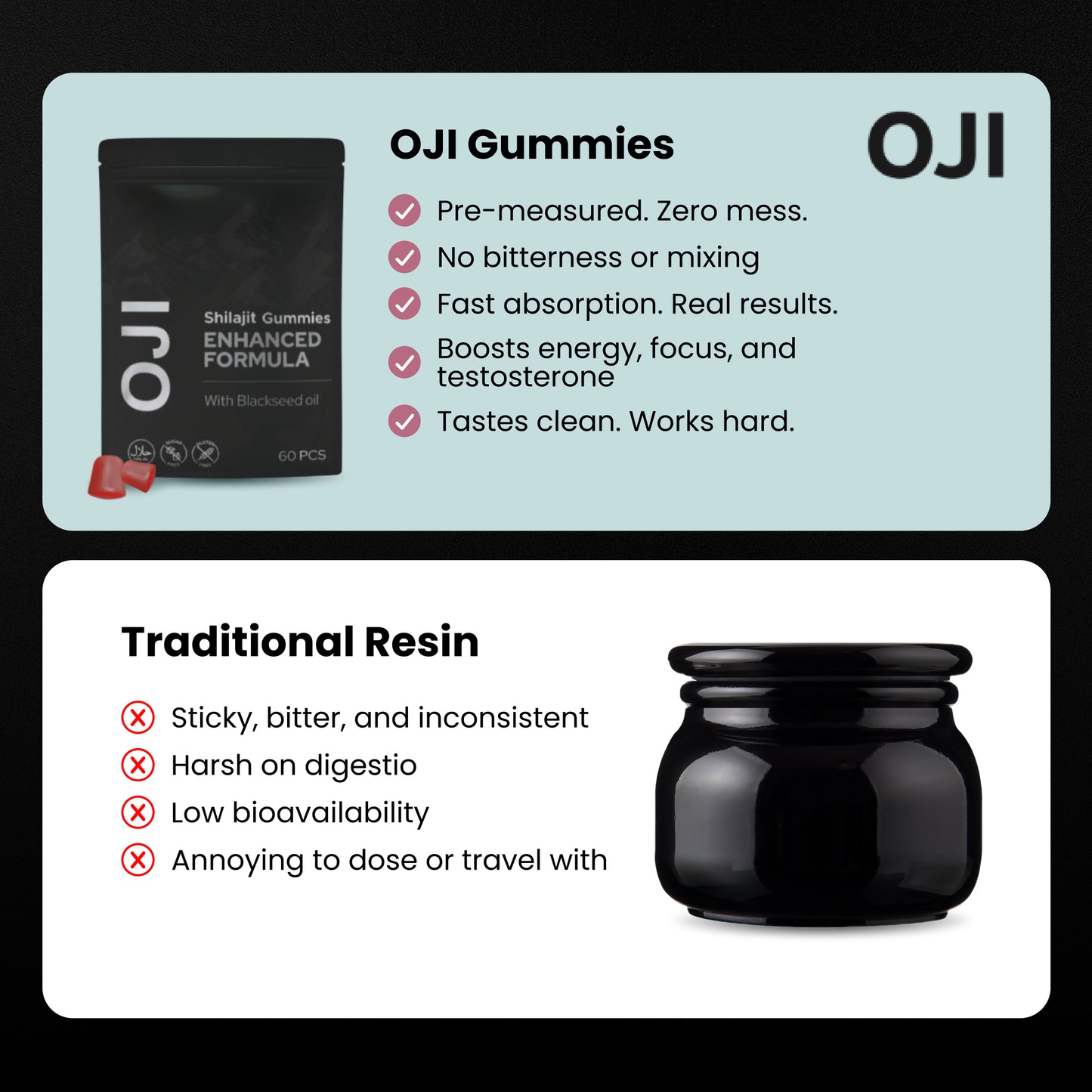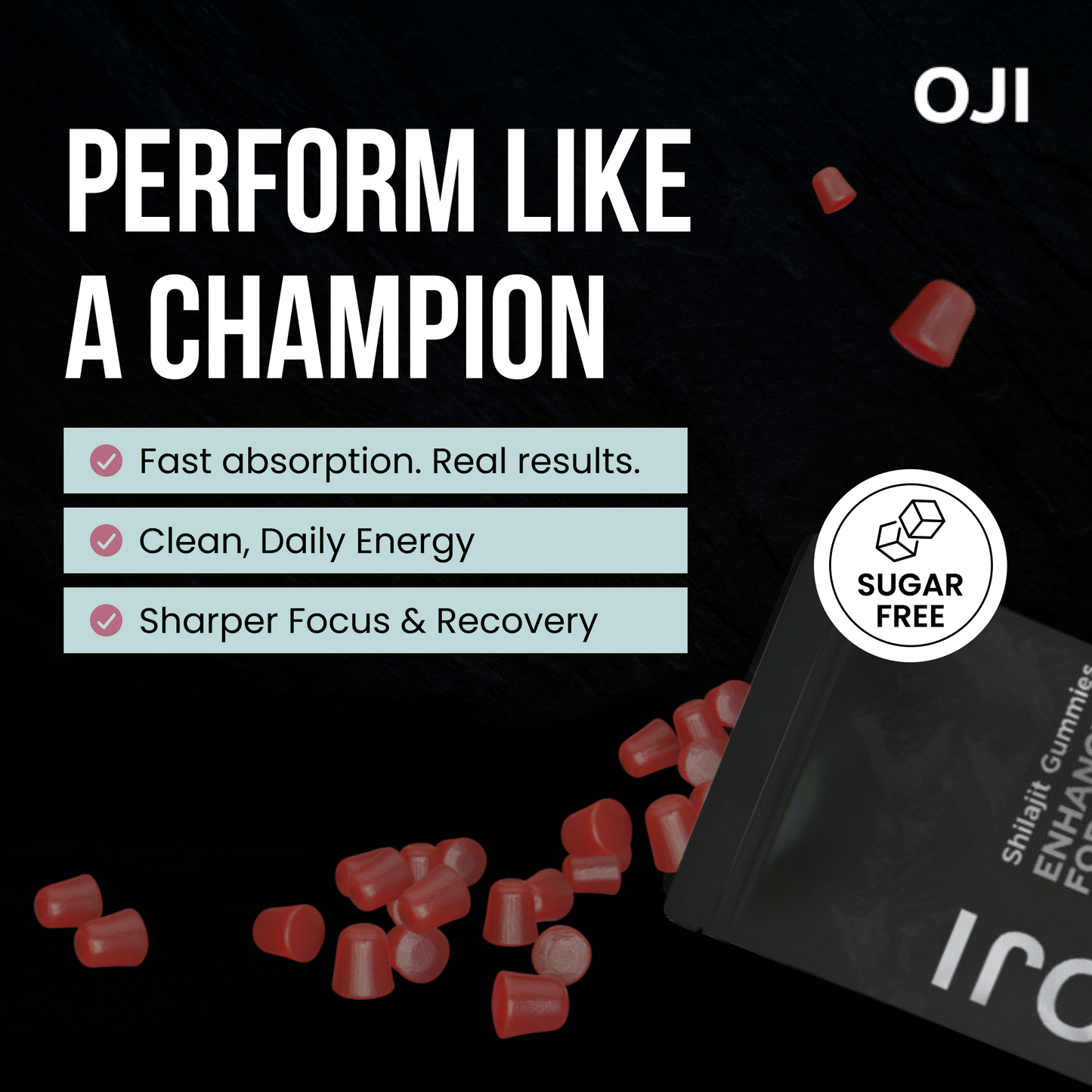Stamina is the essential energy that powers you through a challenging workout or a demanding workday. It's the difference between just finishing and finishing strong. To build stamina, you must strategically train your body to perform more efficiently and delay fatigue. Improving your endurance allows you to sustain physical and mental effort for longer, boosting both athletic performance and daily productivity.
This guide provides a detailed, actionable roadmap to increase your endurance. We will explore a powerful list of stamina building exercises and training methods designed to systematically enhance your physical capabilities. You will learn not just what to do, but precisely how to implement these strategies for tangible, lasting results. Whether you're aiming to break personal records or seeking sustained energy throughout the day, these techniques offer a structured approach to unlocking your full potential. Prepare to transform your body’s energy systems and redefine your limits.
1. High-Intensity Interval Training (HIIT)
High-Intensity Interval Training (HIIT) is a powerhouse among stamina building exercises. It involves short, explosive bursts of all-out effort followed by brief recovery periods. This method pushes your cardiovascular system to adapt quickly, making it more efficient at delivering and using oxygen. The core principle is to elevate your heart rate significantly during work intervals, triggering powerful adaptations that improve both your aerobic and anaerobic systems. HIIT sessions are incredibly time-efficient, delivering profound fitness gains in a fraction of the time.
How to Implement HIIT: Your Action Plan
To start using HIIT effectively, focus on a clear work-to-rest ratio. For beginners, a 1:3 ratio is ideal: sprint for 30 seconds, then recover for 90 seconds.
- Warm-up: Start with a 5-10 minute warm-up of light cardio and dynamic stretches to prepare your muscles.
- Execution: Choose an exercise (e.g., sprinting, cycling, burpees). Perform your work interval with maximum effort while maintaining proper form.
- Cool-down: Finish with a 5-minute cool-down, allowing your heart rate to return to normal gradually.
- Frequency: Schedule HIIT sessions 2-3 times per week to allow for adequate recovery and prevent overtraining.
The following summary box outlines the key parameters for structuring an effective HIIT workout.

As the infographic highlights, the flexibility in work-to-rest ratios and short session durations makes HIIT a highly adaptable and potent training method. For those eager to delve deeper into optimising their energy levels, you can learn more about how to increase stamina with our detailed guide. This approach is one of the most effective stamina building exercises because it not only enhances physical endurance but also boosts your metabolism for hours after the workout is complete.
2. Long Steady-State Cardio
Long steady-state cardio is a cornerstone of stamina building exercises, centred on maintaining a consistent, moderate intensity for an extended duration (45-90+ minutes). This method is fundamental for developing a deep aerobic base, systematically improving your body's ability to transport and utilize oxygen. The principle is to work within a specific heart rate zone, typically around 60-75% of your maximum, to stimulate adaptations like increased heart stroke volume and enhanced muscle capillary density. It's the go-to training philosophy for endurance athletes like marathon runners and long-distance cyclists.

How to Implement Long Steady-State Cardio: Your Action Plan
To begin, focus on gradual progression and consistency rather than intensity. This method is ideal for building a foundation for higher-intensity work.
- Warm-up: Begin with 5-10 minutes of light activity, such as brisk walking or dynamic stretching.
- Execution: Choose an activity like running, cycling, or swimming. Maintain a conversational pace where you can speak in short sentences without gasping for breath.
- Cool-down: End with a 5-10 minute cool-down, gradually decreasing your pace to allow your heart rate to return to normal.
- Frequency: Aim for 1-2 long sessions per week, complemented by shorter, easier recovery days to prevent burnout.
The following summary box outlines key parameters for structuring an effective steady-state workout.
Type: Aerobic Endurance Intensity: 60-75% of Max Heart Rate Duration: 45-90+ Minutes Best For: Building aerobic base, improving cardiovascular efficiency, mental fortitude.
As the summary indicates, the prolonged duration at a manageable intensity makes this a powerful tool for foundational fitness. For those looking to apply this specifically to their running goals, you can explore our detailed guide to build endurance for running. This approach is one of the most reliable stamina building exercises because it trains your body and mind to handle prolonged physical stress, making it indispensable for any serious endurance endeavour.
3. Circuit Training
Circuit training is a highly effective method that blends resistance training with cardio. You will move through a series of different exercise stations, performing each for a set time or number of reps with minimal rest in between. This structure keeps your heart rate elevated, improving cardiovascular endurance while simultaneously building muscular strength. The key to its effectiveness is its versatility; by targeting different muscle groups in succession, you can work at a high intensity without fatiguing one area too quickly. This makes it one of the best all-around stamina building exercises.
How to Implement Circuit Training: Your Action Plan
To build your own circuit, select 6-12 exercises that target different parts of the body, alternating between upper body, lower body, and core movements.
- Warm-up: Start with 5-10 minutes of light cardio and dynamic stretching to prepare your body.
- Execution: Perform each exercise in your circuit for 30-60 seconds or a set number of reps. Move immediately to the next station with little to no rest. After completing the entire circuit, rest for 1-3 minutes, then repeat for 2-4 rounds.
- Cool-down: Finish with 5-10 minutes of static stretching to improve flexibility and aid recovery.
- Progression: To increase the challenge, add more time to each station, reduce rest between circuits, or add resistance with weights. Always prioritise proper form over speed to prevent injury.
4. Tempo Training
Tempo training is one of the most effective stamina building exercises for pushing your endurance boundaries. The goal is to exercise at a sustained, "comfortably hard" pace, just below your anaerobic threshold (around 80-90% of your maximum heart rate). This specific intensity trains your body to become more efficient at clearing metabolic waste products like lactate, a key factor in fatigue. By increasing your lactate threshold, you teach your body to handle a faster pace for a longer duration, bridging the gap between steady cardio and all-out sprints.
How to Implement Tempo Training: Your Action Plan
To start, you need to find and maintain that comfortably hard effort. It should feel challenging, but you should be able to hold the pace for 20-40 minutes.
- Warm-up: Perform a thorough 10-15 minute warm-up, including light cardio and dynamic stretches.
- Execution: Begin your chosen activity (e.g., running, cycling) and build up to your tempo pace. You should be able to speak, but only in short, clipped sentences. Maintain this effort for your target duration.
- Cool-down: Always finish with a 10-minute cool-down, gradually lowering your intensity to help your heart rate and breathing return to normal.
- Frequency: Limit tempo sessions to once or twice a week, as this is a demanding workout that requires adequate recovery.
Using a heart rate monitor or cycling power meter can help you stay in the correct training zone. For runners, a good rule of thumb is a pace you could hold for a one-hour race. This method is a cornerstone in training philosophies because it directly improves your race-pace endurance.
5. Fartlek Training
Fartlek, a Swedish term for 'speed play', is a creative and flexible form of endurance training. Unlike structured intervals, Fartlek is unstructured, blending continuous exercise with spontaneous bursts of varying speed. This playful approach keeps workouts engaging and challenges your body in unpredictable ways, making it one of the most effective stamina building exercises. The core principle is to vary your pace based on how you feel or by using landmarks. This dynamic method improves both aerobic and anaerobic fitness by constantly shifting the demands on your cardiovascular system, developing stamina, speed, and mental toughness.
How to Implement Fartlek Training: Your Action Plan
Getting started is simple because it’s so adaptable. The key is to listen to your body and embrace spontaneity in your chosen activity (running, cycling, swimming, etc.).
- Warm-up: Start with a 5-10 minute easy-paced warm-up to prepare your body for varied intensities.
- Execution: Begin your activity at a comfortable pace. When ready, pick a landmark (like a lamppost) and increase your speed until you reach it. Slow down to recover until you feel ready for the next surge. Repeat this for the duration of your workout.
- Cool-down: Conclude with a 5-10 minute cool-down, gradually bringing your heart rate back down.
- Frequency: Incorporate Fartlek training 1-2 times per week, often in place of a steady-state or formal interval session.
A Fartlek session is about intuitive effort, not fixed timings. For example, you might run hard up a hill, jog easily on the flat, and then sprint for 100 metres. This approach boosts physical endurance and breaks the monotony of structured training, making it a sustainable way to build stamina.
6. Tabata Protocol
The Tabata Protocol is a specific and demanding form of HIIT, known for its profound impact on conditioning. Based on research by Dr. Izumi Tabata, this method uses extremely short, intense work periods followed by even shorter rest. This scientifically proven cycle simultaneously boosts both aerobic and anaerobic fitness, making it one of the most efficient stamina building exercises.

Its defining feature is the 2:1 work-to-rest ratio, condensed into a gruelling four-minute block. This structure places immense stress on the body's energy systems, forcing them to adapt and improve capacity at an accelerated rate. Tabata is the gold standard for achieving maximum results in minimal time.
How to Implement the Tabata Protocol: Your Action Plan
A true Tabata requires absolute maximum effort during the 20-second work intervals. The intensity should be so high that the 10-second rest feels essential yet insufficient.
- Warm-up: A 5-10 minute warm-up is non-negotiable to prepare your body and reduce injury risk.
- Execution: Choose a single full-body exercise (e.g., burpees, kettlebell swings). Perform it with maximal effort for 20 seconds, rest for exactly 10 seconds, and repeat this cycle for eight total rounds (four minutes).
- Cool-down: Always finish with a 5-10 minute cool-down, including light stretching, to help your systems return to normal.
- Frequency: Due to its intensity, limit Tabata to 1-2 times per week on non-consecutive days to ensure full recovery.
The following summary box outlines the key parameters for structuring a genuine Tabata workout.
As the infographic shows, the rigid structure and all-out effort are what make the Tabata protocol so potent. Its effectiveness lies in pushing past perceived limits within a very short timeframe. This approach is one of the most challenging yet rewarding stamina building exercises, as it dramatically improves your physical endurance and metabolic rate long after the four-minute session has ended.
7. Progressive Overload Endurance Training
Progressive Overload is a core principle for long-term stamina gains. The action is simple: systematically increase the demands placed on your body over time, forcing it to adapt and grow stronger. This methodical approach ensures continuous improvement by gradually increasing key training variables like duration, intensity, or frequency. The science is based on adaptation; by applying a stress slightly greater than your body is used to, you stimulate it to adapt and recover to a higher fitness level. This makes it one of the most reliable stamina building exercises for avoiding injury and burnout.
How to Implement Progressive Overload: Your Action Plan
To apply this principle, you need a structured plan and a way to track your progress. The key is to make small, manageable increases to your training load.
- Follow the 10% Rule: A safe guideline is to increase your total training volume (e.g., distance run) by no more than 10% per week.
- Track Your Metrics: Keep a log of your workouts, including duration, distance, pace, and how you felt. This data is crucial for making informed decisions about your next progression.
- Plan Recovery: Schedule regular "de-load" or recovery weeks with reduced training volume. This allows your body to fully adapt and repair, preventing overtraining.
- Listen to Your Body: Pay attention to signals of fatigue and soreness. Adjust your plan as needed, as progression is never a straight line.
This structured approach is ideal for anyone training for an event or seeking consistent, injury-free improvement. For those looking to support their body's recovery, you can explore supplements for endurance on Myoji.co.uk. Combining strategic training with proper nutritional support creates a powerful formula for success.
8. Cross-Training
Cross-training is a versatile strategy that involves incorporating different types of exercise into your routine. Instead of focusing on a single activity, you engage in a variety of movements to challenge your body in new ways. This prevents fitness plateaus and keeps your training engaging. The principle is to develop well-rounded fitness by targeting different muscle groups and energy systems. For example, a runner adding swimming to their regimen builds upper-body strength and improves lung capacity without the high-impact stress on their joints. This diversification makes it one of the most sustainable stamina building exercises.
How to Implement Cross-Training: Your Action Plan
To successfully integrate cross-training, choose activities that complement your primary fitness goals while addressing any weaknesses.
- Choose Complementary Activities: Select exercises that work different muscle groups. If you're a cyclist (leg-dominant), add rowing or swimming to build upper-body and core strength.
- Structure Your Week: Dedicate 1-2 days per week to your cross-training activity. Use it as an active recovery day or a session to target specific fitness gaps.
- Balance Impact: Mix high-impact activities like running with low-impact options like cycling or an elliptical. This gives your joints a break while still providing a great cardio workout.
- Listen to Your Body: Pay attention to how your body responds. The goal is to supplement, not detract from, your main training. Adjust intensity and frequency to avoid burnout.
This method is especially powerful for anyone from athletes seeking a competitive edge to fitness enthusiasts wanting a more holistic and injury-proof approach to building endurance. By constantly varying the stimulus, you keep your body adapting, leading to continuous improvements in your overall stamina.
Stamina Exercises Comparison Matrix
| Training Method | Implementation Complexity 🔄 | Resource Requirements ⚡ | Expected Outcomes 📊 | Ideal Use Cases 💡 | Key Advantages ⭐ |
|---|---|---|---|---|---|
| High-Intensity Interval Training (HIIT) | Moderate to High (structured intervals) | Low to Moderate (any cardio equipment) | Significant aerobic & anaerobic capacity gain | Time-efficient stamina building, improving endurance & power | Time-efficient; metabolically effective; adaptable |
| Long Steady-State Cardio | Low (steady pace maintained) | Low (basic cardio equipment or outdoors) | Strong aerobic base, improved cardiovascular efficiency | Endurance athletes, beginners, fat-burning focus | Low injury risk; builds aerobic base; suitable for all levels |
| Circuit Training | Moderate (multiple exercises, minimal rest) | Moderate to High (equipment varies) | Muscular and cardiovascular endurance | Full-body conditioning, fitness classes, mixed modality training | Builds muscular endurance and cardio; scalable; engaging |
| Tempo Training | Moderate (steady, sustained effort) | Low to Moderate (monitoring devices helpful) | Improved lactate threshold and stamina | Race-specific training, improving pace judgment | Efficient stamina builder; mental toughness; threshold improvement |
| Fartlek Training | Low to Moderate (unstructured variation) | Low (any environment) | Stamina, speed, and power development | Variety seekers, outdoor runners, mental engagement | Fun and adaptable; reduces monotony; multi-system development |
| Tabata Protocol | High (strict 20s work/10s rest cycles) | Low (minimal equipment) | Max aerobic and anaerobic improvements | Short, very intense workouts; advanced fitness | Extremely time-efficient; scientifically validated; highly effective |
| Progressive Overload Endurance Training | Moderate to High (planned progression) | Low to Moderate (depends on activity) | Continuous stamina improvement with low injury risk | Long-term endurance development, beginners ramping up | Systematic; prevents plateaus; reduces injury; measurable progress |
| Cross-Training | Moderate (varied activities) | Moderate to High (multiple modalities) | Well-rounded endurance, injury prevention | Injury recovery, athletes needing varied stimulus | Reduces injury; improves overall fitness; prevents burnout |
Integrating Stamina Training into Your Lifestyle
The journey to superior endurance isn't about finding a single magic workout; it's about building a sustainable, intelligent, and personalised framework. We've explored a powerful arsenal of stamina building exercises, from the explosive bursts of HIIT to the disciplined pacing of Tempo Training. Each method, whether it's the versatile Fartlek training or the structured variety of Circuit and Cross-Training, offers a unique pathway to enhancing your cardiovascular and muscular endurance. The true art lies in skilfully weaving several of these strategies into your weekly routine. Your body thrives on variety and progressive challenges. This is the essence of building robust, functional stamina that translates into real-world energy.
Your Actionable Blueprint for Building Stamina
Realising your endurance potential requires moving from knowledge to action. Here’s a concrete plan you can start today.
-
Assess and Select: Review the eight methods in this article. Choose two or three that appeal to you and align with your current fitness level and equipment. A beginner might start with Long Steady-State Cardio twice a week and one bodyweight Circuit Training session. An advanced athlete might combine Tempo runs, HIIT, and a cross-training day.
-
Schedule Your Week: Open your calendar and block out your training sessions. A balanced week could look like this:
- Monday: HIIT Session (20-25 minutes)
- Tuesday: Active Recovery (e.g., gentle walk, stretching)
- Wednesday: Tempo Training (30-40 minutes)
- Thursday: Rest or Light Cross-Training (e.g., swimming)
- Friday: Circuit Training (30 minutes)
- Saturday: Long Steady-State Cardio (45-60 minutes)
- Sunday: Complete Rest
-
Listen and Adapt: Your body provides crucial feedback. If you feel exceptionally fatigued, swap an intense session for active recovery. True progress comes from consistency, not pushing through excessive pain. This adaptive approach is key to long-term success with any stamina building exercises.
Beyond the Workout: The Pillars of Endurance
Remember, what you do outside of your training is just as important. Prioritise quality sleep, as this is when your body repairs muscle and solidifies fitness gains. Fuel your efforts with a balanced diet rich in complex carbohydrates for energy and lean proteins for repair. Hydration is non-negotiable; even slight dehydration can significantly impair your stamina. By embracing this holistic view, you're not just exercising; you're cultivating a high-endurance lifestyle. You are building a body and mind that are resilient, energetic, and prepared for any challenge. Start today, stay consistent, and watch your stamina soar.
Ready to amplify your body's natural recovery and energy systems? Complement your hard work and dedication to these stamina building exercises with targeted nutritional support. Discover how the fulvic acid and 85+ trace minerals in Oji Shilajit can help replenish essential nutrients and support your journey towards peak endurance at Oji Shilajit.





